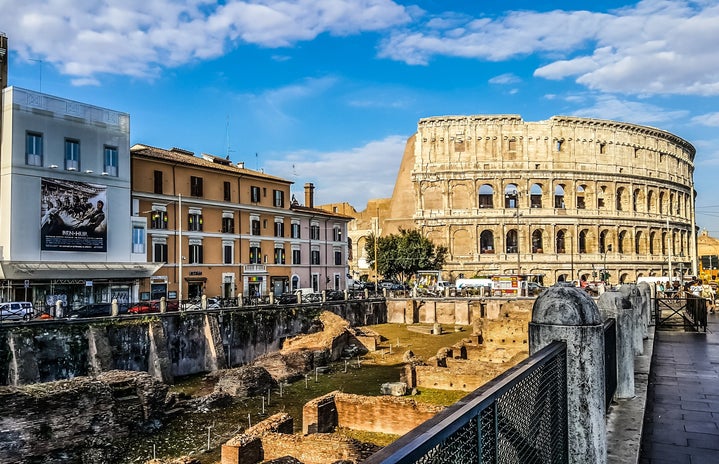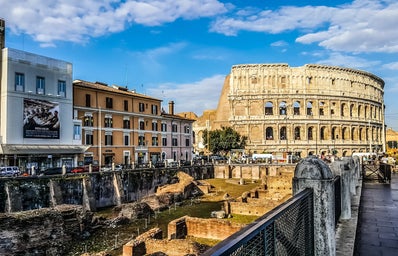The summer before my senior year of high school, I had the opportunity to visit Rome, Italy. After my mom won her battle with breast cancer, my grandma thought it was a perfect time for a “Cheetah Girls” adventure to Europe. How could I argue with that? From the gelato to walking down cobblestone streets in flowy skirts, I could never possibly describe the beautiful experiences that allowed Rome to capture my heart. Yet, one moment in particular stands out more than most.
One afternoon, we visited the Basilica of Saint Cecilia. This was a huge moment because Saint Cecilia, the patron saint of musicians, is my Confirmation saint. Major fan of that woman. We walked below the Basilica into the ancient catacombs of Rome. These dark, cold corridors were once above-ground streets and full of life, however that looked thousands of years ago. At the end of the hallway, we turned right into a stone room. This very room was where Saint Agatha was believed to be murdered.
Mere months after my mom had her surgeries, we stood before the mosaic image of Saint Agatha, the patron saint of breast cancer survivors. All of us were overwhelmed with tears— tears of joy, pain, peace. This defining moment in my mom’s journey to recovery is one I hope to never forget.
Years later, I often try to return before Saint Agatha’s mosaic image and recreate the scene in my imagination. As I have also been reflecting on the events of recent months, one factor of this artwork has transcended all others: Saint Agatha is white.
Not once did I notice that. Is it ignorant that I never noticed Saint Agatha’s race? Is it because, as a white female, I have the privilege to not think about my race in most situations? Or at the time, was I blinded by emotion as we were literally standing before the heroine defender of breast cancer victims just weeks after my mom was cleared?
But then, Shaun King proposes an interesting theory on Twitter: “All murals and stained glass windows of white Jesus, and his European mother, and their white friends should also come down. They are a gross form of white supremacy. Created as tools of oppression. Racist propaganda. They should all come down.”
This note is not to argue for the protection of white representation in art; in fact, I would argue that there definitely should be more diverse representation, especially within religious art. There is no question that there should be a more historically accurate portrayal of Jesus, the Holy Family, and the Saints.
But with regards to the existing works— the numerous depictions of white Jesus, white Saint Agatha, and their “white friends”— are we advocating for their removal because of what they look like? Or because of what they represent?
I don’t know the answers to these questions, but I do know that there is the widespread call to remove statues of Confederate soldiers. This is not a new movement, but it has definitely intensified with urgency. Personally, I believe that the removal of the 15-foot stone statues is necessary. There are other ways to be reminded of our history, such as reading books, to ensure that history does not repeat itself; therefore, the statues should be removed for what they represent— separation, division, and hatred— not for what they look like.
In the case of Shaun King’s proposal to completely tear down “white Jesus, and his European mother, and their white friends,” I don’t see these figures representing the same ideologies of the Confederacy. I see Jesus as love made incarnate. And if you have ever thought otherwise, I am sorry.
If the Church has led you to believe that Jesus is representative of only white people, I am sorry. If the Church has led you to believe that Jesus only loves you if you are a certain color, creed, gender, sexuality, political party, special skill, or ability, then I am sorry. If the Church has led you to believe that Jesus died for you so that you could continue treating people the way people treated Him, then I am sorry. If the Church has led you to believe that Christianity is about anything but unconditional love, then I am sorry.
The existing portrayals of Jesus should not portray anything but what He preached— love God with all your mind, heart, and soul, and love your neighbor as yourself (Mark 12: 28-34). I do not follow Christianity for the Church. I follow Christianity for the Founder— a Middle Eastern rebel who loved any and every outcast, even His enemies, and loved us all so much that He died for us so that we could love each other as He loved us.



